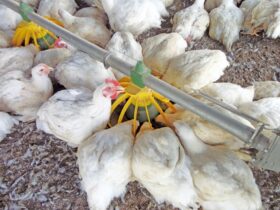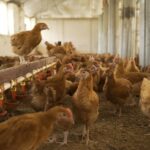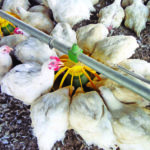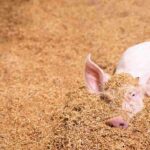By Dr. Twan van Gerwe, Global Technical Director, EW Nutrition
A year ago, the European Commission announced regulation (EU) 2020/1400 – restricting the use of ethyl ester of β-apo-8’-carotenoic acid (generally known as ‘apo-ester’). Starting on 26 October 2021, this legislation restricts the use of apo-ester in poultry feed to 5 mg/kg for laying hens and 15 mg/kg for broilers.
As apo-esters is a synthetic pigment – not naturally occurring in nature – this measure was taken because the authorities could not guarantee safety upon exposure to the user. Limiting the concentration in feed would reduce this risk to acceptable levels, according to the legislators’ decision.
Why use apo-esters in the first place?
Apo-ester is a synthetic yellow colorant, with good stability in premixtures and complete feed. It also has a high deposition rate in the yolk, making it an effective egg yolk colorant.
Its ability to be applied through premix facilitates the proper dispersion in the final feed, which is relevant if micro-dosing systems are lacking in the feed mill.
Why was the legislative change necessary?
The legislative change which limits the use of synthetic apo-ester is based on the precautionary principle and in line with a broader market trend: away from synthetic (non-natural) components, towards the use of naturally occurring alternatives.
The alternative to apo-ester
Natural yellow pigments, typically based on lutein and zeaxanthin produced from marigold oleoresin, are available in the market and can be used to reach the egg yolk pigmentation desired by the consumer. In contrast to apo-ester, these natural solutions are functional antioxidants, further contributing to the egg’s nutritious composition.
Challenges for natural alternatives
However, stability in premixtures and complete feed can be a challenge, with inconsistent yolk coloration as a risk. Safety can also be an issue, so it is important to ask for Quality Control measures routinely applied to avoid contamination with undesired substances (e.g., dioxins). To limit the risk of producing eggs with insufficient yolk coloration, it is important to select natural pigments with excellent stability and deposition efficiency.
What is the best natural alternative to apo-ester?
EW Nutrition’s natural pigment Colortek® Yellow B, produced with a proprietary technology, withstands the harsh conditions in premixtures, while the unique saponification process provides unparalleled deposition rates.
Moreover, Colortek® Yellow B is the most concentrated natural pigment on the market, making it the perfect premix-delivered colorant in the egg industry. If you want to produce all-natural eggs without worrying about the stability of the product or the reliability of your egg coloration, please contact your local EW Nutrition person.
















